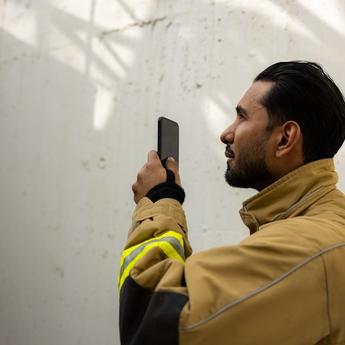Safe cities continue to be a hot topic. Cities are facing a number of new security challenges. These include organized crime, climate change and geopolitical threats. They must also deal with restricted budgets. To meet these challenges, critical organizations need new and more efficient ways of working. Overall, they must be able to do more with less. But how can they do this?
Critical communications users are increasingly using mobile broadband to meet these challenges.
Several public safety organizations are already using Agnet or are bringing it into use, such as in RRF (Réseau Radio du Futur – France’s pioneering case for security and emergency rescue forces) and Virve 2 (Finland’s new generation public safety network) projects. These projects will provide 4G/LTE broadband services, which will work seamlessly with existing narrowband services during the migration period.
4G/LTE already offers a good way to extend their current applications to broadband networks, as well as to adopt new broadband apps. 5G will further enable new and significantly better ways for public safety and other professional organizations to manage incidents and emergencies. It can even help find new ways to prevent them.
Handpicked related content
Download this white paper: "What 5G could mean for mission-critical users – right now ". You will discover five fascinating examples of the new 5G capabilities in mission-critical use.
5G – a wealth of new opportunities
Cities are becoming ever more connected, integrated and digitalized. 5G technology plays a key role in this. It is designed to be a unified, more capable platform.
5G supports new services such as Internet of Things (IoT), Artificial Intelligence (AI) / Machine Learning (ML), and versatile data and analytics services. This helps mobile communications expand into new areas – including safe city solutions.

5G is also substantially faster than 4G and with more capacity, thus creating never-before-seen opportunities for critical communications users.
Rich and abundant data can help make critical operations more efficient and deliver better situational awareness. A better picture of what is happening allows faster and better decisions, making citizens, societies and infrastructures more secure.
To give some idea of the new 5G capabilities in mission-critical use, download this white paper. You’ll discover five fascinating new use cases:
Key requirements for critical users
Commercial 4G/5G mobile networks do not meet the requirements of mission-critical users as such, but certain enhancements are needed, such as extended coverage and capacity of networks as well as security. Fast, reliable, and highly available connection is a must-have for mission critical communications. A failure or disruption in a mission critical system or service would have a serious effect.
For example, safe city solutions are often based on many interconnected systems and networks. This can make them vulnerable to cyberattacks.
The large amount of data collected and analysed must also be stored and used in a way that respects individuals' privacy rights, as well as the country’s regulations. Ensuring the security of these solutions and protecting sensitive data is a significant challenge. Another is the lack of standards for safe city technology. Regulations for security and privacy can also vary greatly from country to country.

By meeting the very stringent demands for availability, reliability and security, mobile network operators (MNOs) can offer mission-critical broadband services. Other MNO customers can also benefit from better network coverage and network security. Governments also win as there is no need to invest in a dedicated public safety network.
A more sustainable future
Safer cities are also about a greener environment.
Solutions that help people collaborate over broadband, such as Agnet, can help reduce the environmental footprint. For example, Agnet makes it easy for airport workers to share information and cooperate easily. This speeds up turnaround times, saving money and avoiding running engines on the ground for too long. It also optimizes the use of potable water and reduces catering waste. All these reduce emissions and the environmental load.

Power grids are another example. Renewable energy (e.g. wind and solar energy) and distributed small-scale energy production need to be managed efficiently and flexibly. Any disruption in power distribution is costly. Problems must be corrected quickly and efficiently.
Smart grid monitoring helps energy companies better manage consumption, increase green energy production, improve reliability and availability of electricity supplies, and increase efficiency compared with traditional power networks. Modern group communication solutions, such as Agnet, can help by keeping staff easily and securely connected. This results in better situational awareness and saved time, both in daily operations and large service outages.
Cooperation is key
Safe city solutions include a wide range of different technologies. No single vendor has all the products and solutions needed, or the skills to master all the different technologies. Therefore, extensive cooperation is needed to create integrated safe city solutions. This can help solve the new security challenges that cities and societies are facing, in new and more efficient ways.
The good news is that transition from 4G to 5G preserves the investments made in modern mission-critical broadband communications solutions (MCX), such as Agnet. This means public safety and other professional organizations can get started with broadband migration straight away.
Now, discover five fascinating examples of the new 5G capabilities in mission-critical use, download the white paper “What 5G could mean for mission-critical users - right now” –






